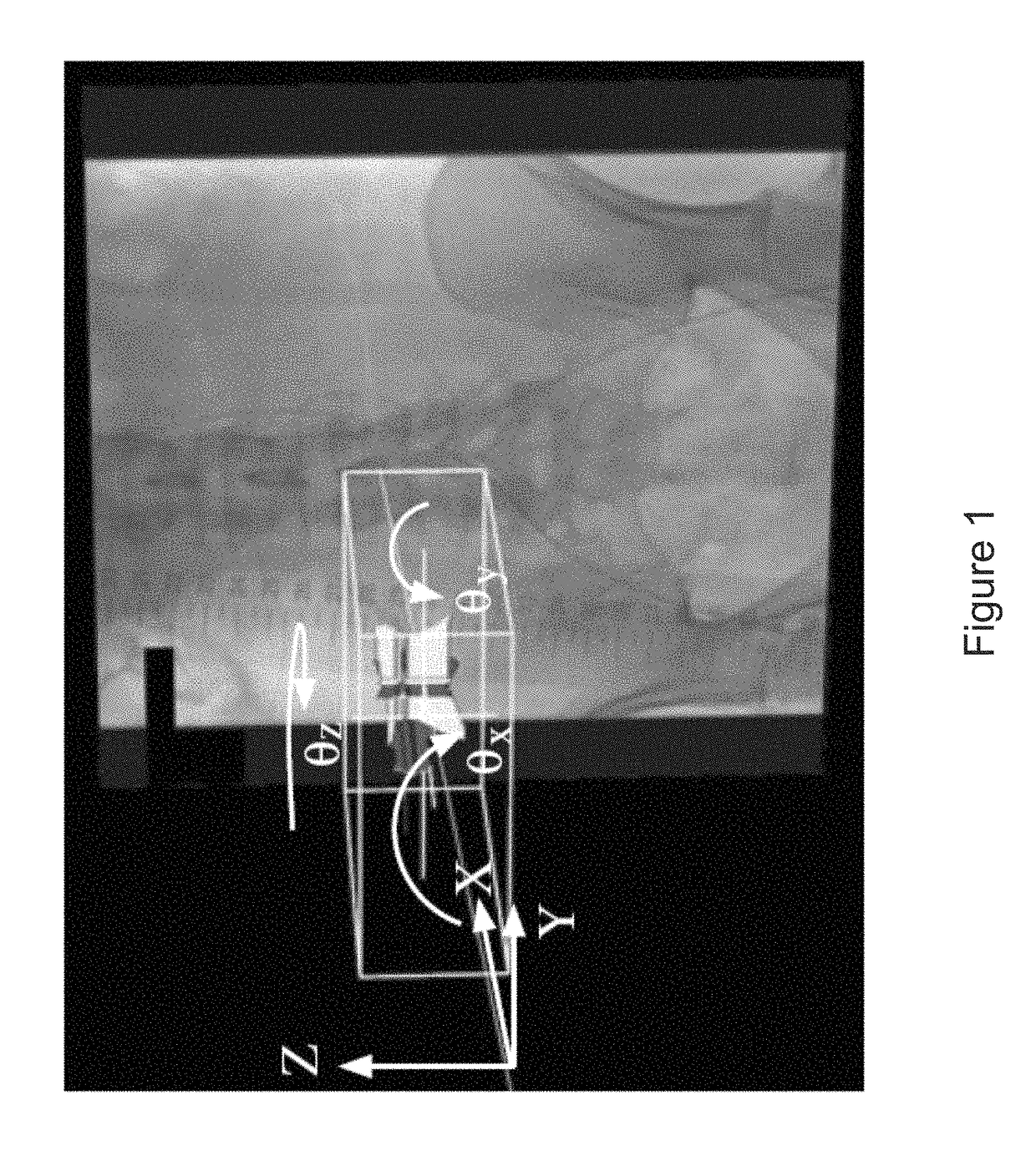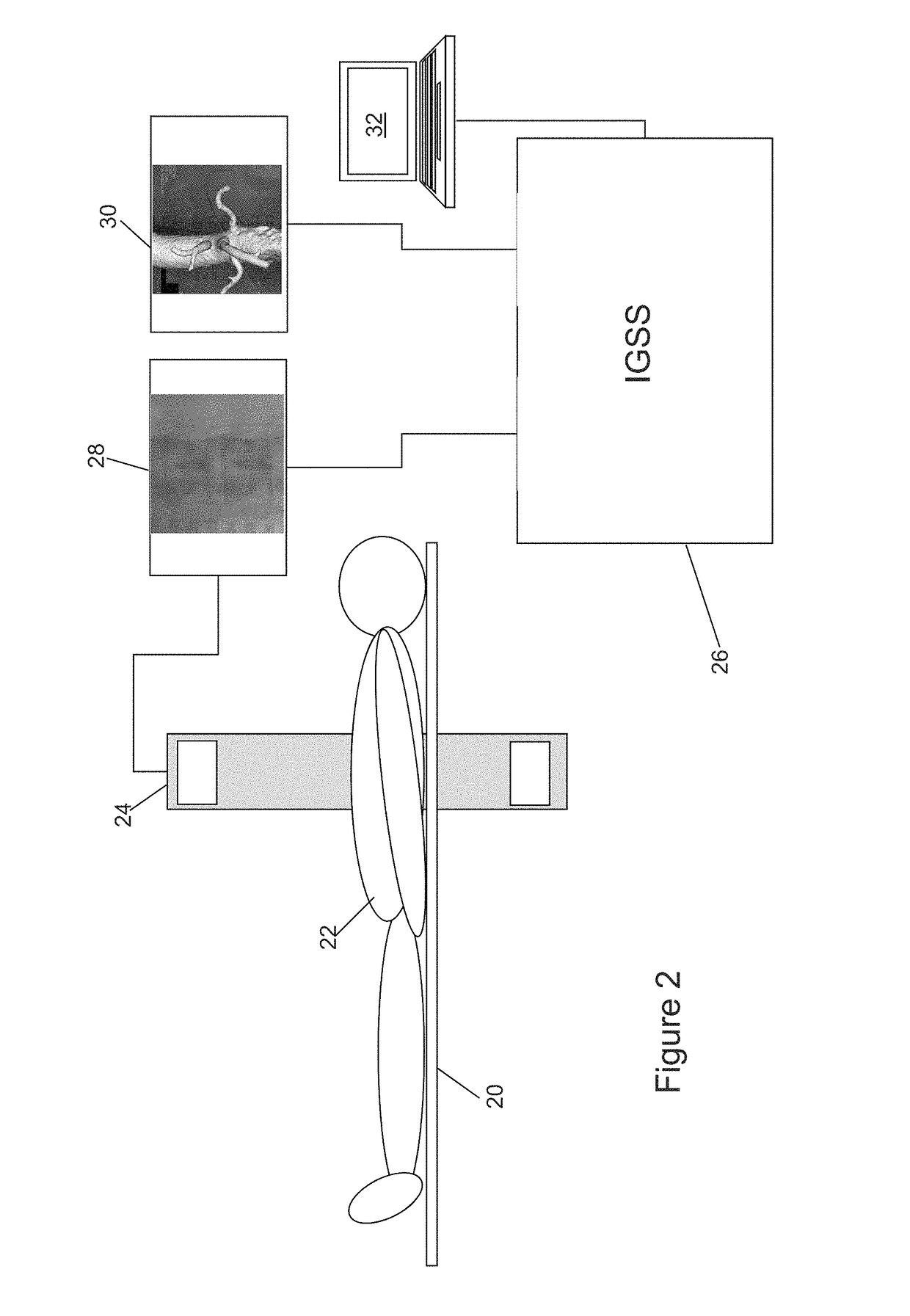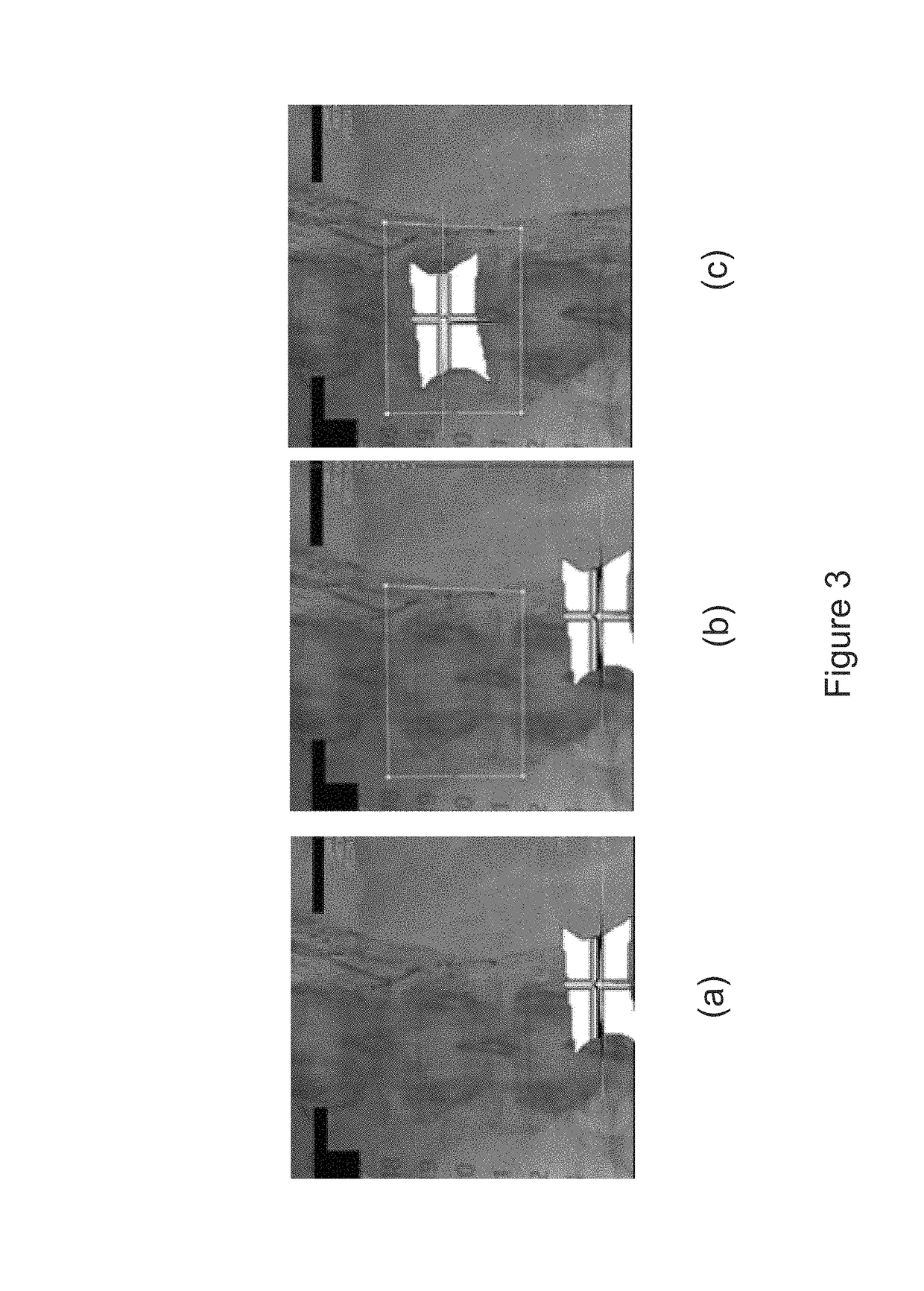Virtual fiducial markers
a virtual fiducial marker and fiducial technology, applied in the field of virtual fiducial markers, can solve the problem that the 2d fluoroscopy image may not be sufficient to allow a surgeon
- Summary
- Abstract
- Description
- Claims
- Application Information
AI Technical Summary
Benefits of technology
Problems solved by technology
Method used
Image
Examples
first embodiment
[0068]The first embodiment acts to manipulate 3D image data so as to insert therein a virtual fiducial marker. This is achieved, as will be described in more detail below, by undertaking two registrations of the 3D data with two 2D images, the two 2D images having been captured of the subject from different angles. Within each 2D image there should be visible a common fiducial marker. This may, for example, be a feature of the subject shown in the images, such as, for example, a vertebra or the like in a surgical application, or may be a specific physical marker that has been inserted into the image. In one embodiment this marker is a radiopaque ruler placed under the patient subject, and visible in the fluoroscopy image. The registration of the 3D data set to a 2D image provides information in the form of a respective perspective projection matrix, which provides a transform to map the position of a 3D voxel in the 3D data set to a respective 2D image pixel position. Using this tra...
third embodiment
[0070]The third embodiment provides an alternative use for an inserted VFM, being that of determining the accuracy of a registration process. In this respect, a registration process acts to orient the 3D data set via a series of translations and rotations, as described previously with respect to FIG. 1. Once a registration process has been performed, therefore, the set of 3D image data may have been translated, as well as slightly rotated from an initial start position. Where the 3D data set contains a VFM, however, corresponding to a fiducial marker still present in the 2D image, it becomes possible to determine the accuracy of the registration process by determining the distance between the VFM position, and the back-projection line from the 2D fiducial marker position to the X ray source. In a perfect registration, the VFM should lie on the back-projection line, and any deviation from such a condition indicates error in the registration achieved. By looking at the computed distan...
second embodiment
[0091]The second embodiment uses an inserted VFM to obtain a starting position for a subsequent 3D to 2D image registration procedure. FIGS. 7 and 8 will now be used to explain how the VFM can be used to obtain a registration starting position. The required processing is generally performed by the registration start position program 9046, supplemented by manual inputs and controls as required.
[0092]With reference to FIG. 8, the inputs into the process are the 3D preoperative image, with the VFM inserted, and a 2D intra-operative image, which has the 2D FM (i.e. the actual 2D marker) visible. The aim is to use the VFM to obtain a starting position for an automatic registration algorithm (as shown in Penney et al. IPCAI 2011 ibid. for example).
[0093]In step 5A the 2D position of the 2D FM (i.e. the actual 2D marker, as noted above) is located within the 2D intra-operative image. This could be achieved manually, or using a suitable feature extraction method, such as a Hough transform f...
PUM
 Login to View More
Login to View More Abstract
Description
Claims
Application Information
 Login to View More
Login to View More - R&D
- Intellectual Property
- Life Sciences
- Materials
- Tech Scout
- Unparalleled Data Quality
- Higher Quality Content
- 60% Fewer Hallucinations
Browse by: Latest US Patents, China's latest patents, Technical Efficacy Thesaurus, Application Domain, Technology Topic, Popular Technical Reports.
© 2025 PatSnap. All rights reserved.Legal|Privacy policy|Modern Slavery Act Transparency Statement|Sitemap|About US| Contact US: help@patsnap.com



